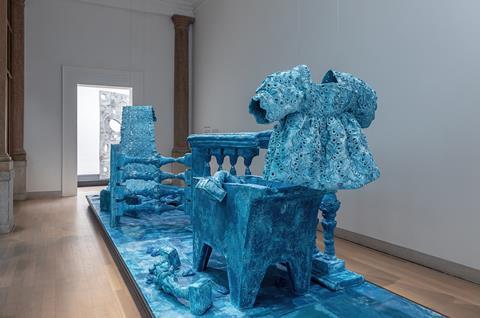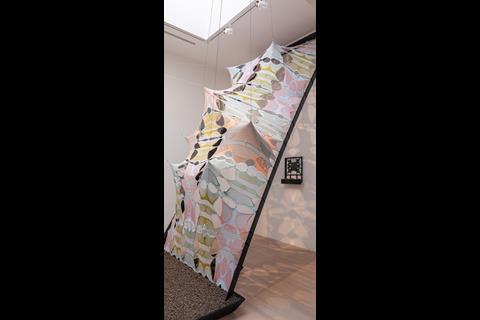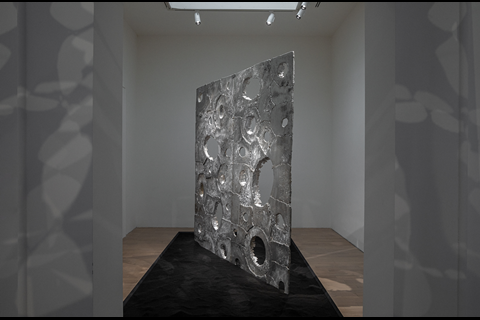‘Dancing Before the Moon’ to feature a giant domino and a temple filled with perfumed bones

A giant domino, a ‘bone temple’ and a series of objects covered in soap will feature in this year’s British Pavilion at the Venice Architecture Biennale, the British Council has revealed.
Six architectural installations have been unveiled by the pavilion’s four curators, Jayden Ali, Joseph Henry, Meneesha Kellay and Sumitra Upham, ahead of the opening of the festival this Saturday.
The exhibition, dubbed ‘Dancing Before the Moon’, will explore how the ritual practices of the UK’s diasporic communities are ignored in the planning of the built environment.
It also aims to celebrate the spaces created by these cultural practices and how they can present new ways of thinking about architecture.
“The exhibition demonstrates the need for architecture to look beyond buildings and economic structures and towards everyday social practices, customs and traditions in order to meaningfully reflect how people use and establish space,” the British Council said.
‘Runout’ by Nottingham-born Mac Collins takes the form of an oversized, abstract timber domino, a reference to the game of dominoes which is widely played by the British-Caribbean community inside pubs and community centres across the UK.

Sandra Poulson’s ‘Sãbao Azul e Água’ explores cleaning rituals which the artist observed growing up in Luanda, Angola. It consists of four objects, a cement tank, a colonial-era balustrade, a traditional Angolan dress and some footprints, each made from fabric and covered with sabão azul, a blue soap that is widely used in Angola.
Other installations include Yussef Agbo-Ola’s ‘Muluku: 6 Bone Temple’, a structure built from cotton and pineapple fibre which celebrates performance art in Yoruba and Cherokee cultures.
Bones scented with mint and lavender are placed inside the ‘temple’ on volcanic stones, representing the earth’s ability to create life through decay and reincarnation.
“The British Pavilion at the Biennale Architettura 2023 celebrates what it means for people to create and occupy space,” the curators said.
“Through the lens of South Asian, African and Caribbean diasporas in Britain, Dancing Before the Moon explores how rituals have the potential to uniquely adapt and challenge the built environment.
“Here social and temporal practices are upheld for enhancing attachment to land, transforming space and binding communities.”
British Council architecture, design and fashion director Sevra Davis said the pavilion encourages visitors to reflect on contemporary architecture and think about how diversity can create more vibrant places.
“Through an exploration of ritual and community, the exhibition challenges the architectural industry to put people at its heart and think differently about the production of architecture in the future,” Davis said.
“The artist commissions celebrate how people and communities occupy and use everyday spaces and places reflecting the architecture industry back on itself.”
Former curators at the British Pavilion include Richard Rogers, Zaha Hadid, David Adjaye and Farshid Moussavi.
This year’s theme for the Biennale is the “Laboratory of the Future”. It will be the first iteration of the event themed around Africa, with more than half of participants hailing from the continent or the African diaspora.
The festival has been hit by a controversy in the build up to its opening over visas which were denied to three Ghanaian collaborators working with Lesley Lokko, the event’s curator.
The Italian ambassador to Ghana has said the three men did not meet the requirements to enter into the European Union’s Schengen Area.






















1 Readers' comment